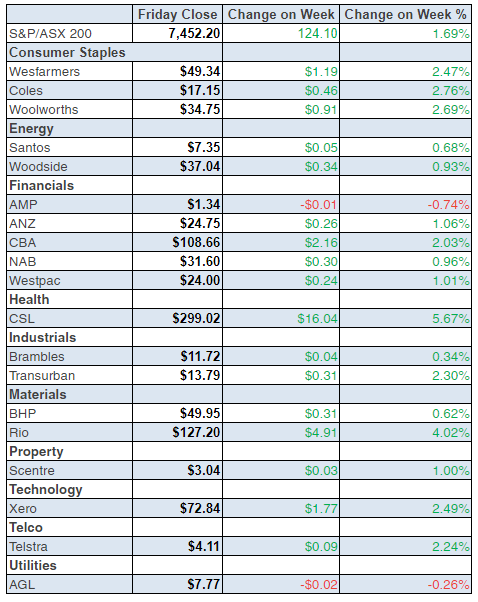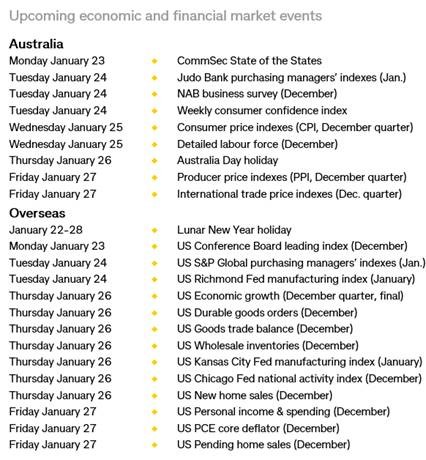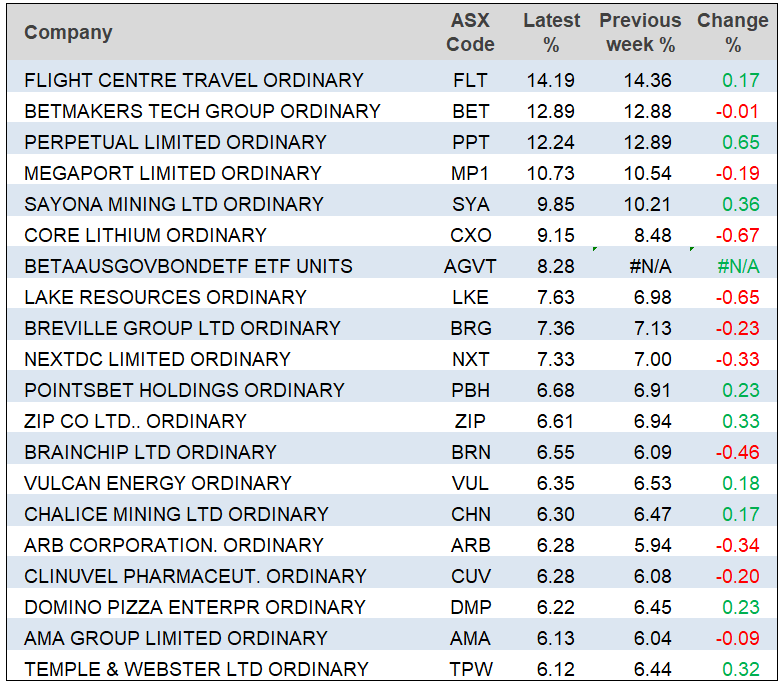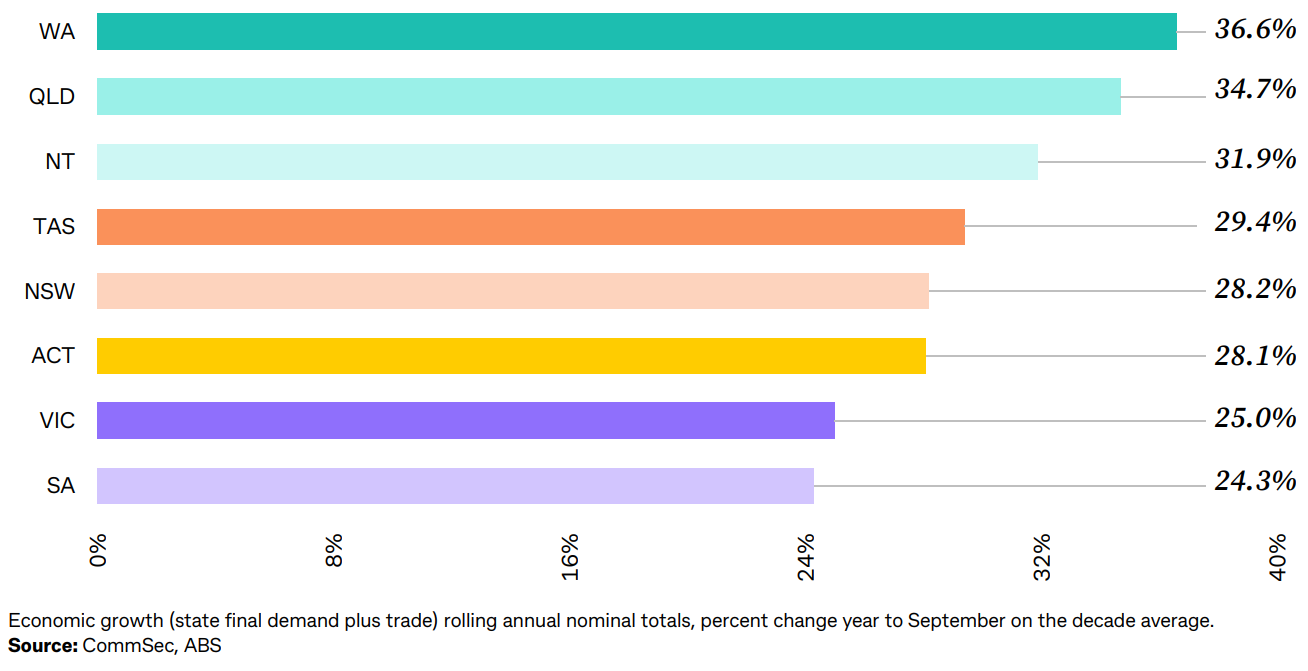
Negativity made a comeback on US stock markets and according to AMP’s Shane Oliver, this is why “US recession risk is high, but if there is one it’s likely to be mild.”
Shane goes on to say that “Weak US business surveys, leading indicators, retail sales and industrial production, along with the inverted yield curve, indicate that the risk of a US recession remains high, posing a threat to earnings and hence share markets. With the Fed getting closer to easing up on the brakes though and an absence of major imbalances beyond inflation, any recession should be mild.”
And it’s not just a fear of the R-word but it’s also what it means for profits of leading companies. I watched a series about Vikings over the break and as they would say: “We’re in the hands of the gods!”
Market experts say a re-test of 2022 share market lows remains a risk on the back of recession and earnings worries but the combination of falling inflation, central banks becoming less hawkish and global growth holding up better than feared is expected to result in stronger share markets this year and some further decline in bond yields. This is likely to favour non-US shares, including the Australian share market, over US shares.
My view is simple: stocks will rise this year, even with short-term pullbacks and it will be because inflation is falling and interest rate rises will stop. And tech stock prices might be slow out of the blocks but when they ‘jump’ they will bolt. That’s the way I’m positioning my investments and my financial planning clients’ portfolios.
I wrote the above last night and ahead of the close on Saturday morning our time and Friday arvo in New York, the day’s trade reinforces my view that we’re seeing a sneak preview of what’s likely to happen over 2023 and 2024.
Despite this being a losing week, after a great start to the year (which historically is a good omen for the overall year of stock market trading), Friday saw stocks up, with the tech-heavy Nasdaq being the best performer. So, why?
Well, first up, Netflix reported a solid bigger-than-expected rise in subscribers and Alphabet cut 12,000 jobs. Next, economic data says US inflation is sliding faster than the bears and probably the Fed have been guessing. And then Federal Reserve Governor Christopher Waller on Friday said he backs a quarter percentage point interest rate increase at the central bank’s next meeting, which is at odds with other Fed Governors who are prepared to wear a tough recession to permanently kill inflation.
A big date for the stock market is January 31/February 1, when the Fed next meets to look at what they should do with rates.
Tim Seymour, founder and chief investment officer of Seymour Asset Management in the US, has summed it up neatly for CNBC saying: “The market is focused and is not sure how to react between the backward looking Fed analysis of the market versus the forward and leading indicators of the market.”
Those forward indicators include economic data such as retail sales and industrial production. Meanwhile, company reporting is also telling the Fed to be careful that it doesn’t go too far wishing a recession on to the US economy.
This is what Shane Oliver has to say on the US economy: “Weak US business surveys, leading indicators, retail sales and industrial production along with the inverted yield curve indicate that the risk of a US recession remains high, posing a threat to earnings and hence share markets. With the Fed getting closer to easing up on the brakes though and an absence of major imbalances beyond inflation, any recession should be mild.”
This is why we’re seeing market optimism for tech, in particular, because those words “…the Fed getting closer to easing up on the brakes” on interest rate rises, will run ahead of an eventual economic recovery, with lower inflation. And that’s good news for growth/tech stocks, though we will need time before we’re all convinced that the worst of this recession/rate rise threat is behind us.
That’s why I expect short-term sell-offs, which will give way to a longer-term uptrend. Why? Remember, the Nasdaq and S&P 500 were pretty well in bear markets for most of 2022, as the chart below shows.
S&P 500

And the Nasdaq is still down 29% (that’s a serious sell-off) and is back to August 2020 levels. Ultimately, this market is in the hands of the Fed and it makes its FOMC meeting on January 31 to February 1 very important for stock prices. Interestingly, the US jobs report comes out on February 3, which means the central bank interest rate deciders will be flying blind on a really important piece of economic data!
To the local market and we were up for the week, with the S&P/ASX 200 rising 1.7% for the week leaving the index at 7452.2. This was helped by Whitehaven Coal and Pilbara Minerals, which both produced better-than-expected quarterly updates.
The latter was up 13.18% on Friday and that makes a 27.81% rise for the year but that’s nothing compared to Whitehaven, which is up 242% for the past year!
But it wasn’t all good news for all lithium producers, with Liontown Resources losing 8.3% to $1.37 after warning its production costs at its Kathleen Valley mine were higher than forecasted.
What’s interesting is that our overall market is now up 3.85% for the past 12 months, after being down around 16% at two stages last year (in June and September), so we’ve had a nice rebound, which you might recall I always argued would show up in the December quarter.
What I liked
- The Australian share market rose for the third week in a rowto be just 2.5% or so below its all-time high.
- Our job report showed a fall in employment of 14,600, when a 25,000 rise was expected. This is a good inflation-beating sign for the RBA. That said, the jobless rate at 3.5% is good for job-seekers but not for those wishing for fewer interest rate rises from Dr Phil Lowe.
- The return of net overseas migration continued in November with another lift in net permanent and long-term arrivals.
- The tourism sector is also seeing a steady return of short-term overseas arrivals, although numbers remain well below what they were in 2019.
- Inflationary pressures continuing to show signs of receding, with further falls in US and European inflation rates in December and business survey price indicators pointing down.
- This from Shane Oliver: “Resilient economic data in Europe and signs that the surge in cases in China may have peaked, with optimism about Chinese growth this year leading to some lessening in global recession risks.”
- And here’s Shame Oliver again: “A somewhat less hawkish tone from most Fed speakers, with more talking of downshifting further to 0.25% hikes and Fed Vice-Chair Brainard leaning incrementally dovish.”
- And Shane Oliver again on the important matter of inflation: “Our Pipeline Inflation Indicator continues to point to a further sharp fall in US inflation in the months ahead. And with US inflation leading other countries’, including Australia’s, inflation rates on the way up its decline points to a fall in Australia and elsewhere too. We remain of the view that US inflation will slow faster than the Fed is expecting, so see the Fed Fund’s rate topping out earlier (probably in March) and lower than its “dot plot” is indicating.”

Source: Bloomberg, AMP
- European share marketsclosed mostly higher on Tuesday, ending at 9-month highs, after a report said the European Central Bank’s (ECB) policymakers were considering a slower pace of interest rate hikes.
- The ZEW Institute’s economic sentiment index rose from -23.3 to 16.9 in January (survey: -15), pointing to a milder German recession than initially feared.
What I didn’t like
- A lack of local economic data!
- Sales of US existing homes fell to an annualized pace of 4.02 million units in December, down 1.5% month over month and 34% year over year! The last time the pace of buying was this slow was in November 2010, just after the GFC and the Great Recession in the US.
- The New York State Empire manufacturing index fell from -11.2 to -32.9 in January (survey: -8.7), the lowest level since May 2020, which was Coronavirus crash times for stocks. The Fed has to be careful with its rate rises.
Final word from Shane
This assessment from Shane Oliver’s economics team seems appropriate to set us up for the investing year ahead: “We remain of the view that the RBA has done enough rate hikes to bring inflation back to target and that it should and will pause in February to avoid the risk of unnecessarily tipping the economy into recession. The monthly jobs and inflation data (pointing to December quarter inflation coming in below RBA expectations) are consistent with the RBA pausing. But the strength of retail sales as indicated by the ABS for November and from corporate reports suggests a still high risk of another 0.25% hike in February.
“Interestingly, the futures market has only priced in a 60% probability of a 0.25% hike in February and now sees the cash rate peaking at just over 3.5% compared to 4% at the start of the year. Of course, there is more inflation data to come in the week ahead and December retail sales data the week after, all before the next RBA meeting.”
My take is that if Shane is right and we’re close to the last interest rate rise, it will be another good omen for stock playing in 2023. And as the Vikings say, “we’ll be dining at Odin’s table in Valhalla” – see you there!
The week in review:
- In this week’s Switzer Report, I talk about how I am planning to invest for 2023, Many reinforcing indicators of late are making me more bullish on what the stock market can deliver over this year!
- Paul Rickard discusses some minor changes to our portfolios to take into account the dominant investment themes we expect to apply, and we’ve also rebalanced our portfolios for 2023.
- Tony Featherstone tells us his four ways to play emerging markets. Although emerging markets can be risky, several factors support a modest contrarian play this year.
- James Dunn discusses 4 targets he predicts will be great take overs for 2023, Takeovers aren’t easy to predict, but here are four situations where I think an acquisitive move wouldn’t be at all surprising.
- In our “HOT” stock column today, Raymond Chan, Head of Asian Desk at Morgans, explains why he likes REA (REA Group). Plus Michael Gable, Managing Director of Fairmont Equities, tells us why he thinks of Worley Ltd (WOR)
- In Buy, Hold, Sell – Brokers Say, there were 10 upgrades and 13 downgrades in the first edition and 3 upgrades and 17 downgrades in the second edition.
- And finally, In Paul’s (Rickard) Questions of the Week, Should you stay long ‘materials’ such as BHP, or take my profit? If there is a big short position, should you be concerned? Has ANZ’s stock code changed? Are the stockbroking analysts bullish on CSL?
Our videos of the week:
- Switz is back and he’s positive on stocks — here’s why! | Switzer Daily
- China’s Population has De-popped! | Switzer Daily
- Our Top Brands Make Great Investments But Beware This Lesson! | Switzer Daily
- We’re becoming a sickie nation and is the stock market getting really sick? | Switzer Daily
- Boom! Doom! Zoom! | 19th January 2023
Top Stocks – how they fared:

The Week Ahead:

Food for thought: “It’s not whether you’re right or wrong that’s important, but how much money you make when you’re right and how much you lose when you’re wrong.” – George Soros
Stocks shorted:

ASIC releases data daily on the major short positions in the market. These are the stocks with the highest proportion of their ordinary shares that have been sold short, which could suggest investors are expecting the price to come down. The table shows how this has changed compared to the week before.
Chart of the week
Economic Growth: Western Australia continues to lead
Ideally, Gross State Product (GSP) would be used to assess broad economic growth. But the data isn’t available quarterly. We have previously used state final demand (household and equipment spending) plus exports less imports to act as a proxy for GSP. But the Bureau of Statistics doesn’t provide long-term trade data for all states and territories in real terms. So nominal state final demand plus trade is assessed with rolling annual totals used to remove seasonality.
Western Australia leads the way
Western Australia continues to lead on relative economic growth. Economic activity in Western Australia in the year to September 2022 was 36.6 per cent above its ‘normal’ or decade-average level of output. Queensland is now in second spot, with output 34.7 per cent above the ‘normal’ level of output.
The Northern Territory is in third position, (up 31.9 per cent) followed by Tasmania (up 29.4 per cent). NSW is now fifth (up 28.2 per cent), ahead of the ACT (up 28.1 per cent).
At the other end of the scale, economic activity in South Australia in the September quarter was 24.3 per cent above its decade average, and behind Victoria (up 25.0 per cent).
Queensland recorded the fastest nominal economic growth, up 21.4 per cent over the year. Next best is the Northern Territory (up 19.9 per cent), followed by NSW (up 14.5 per cent), Victoria (up 9.3 per cent) and South Australia (up 8.7 per cent).
Western Australia records the slowest growth
The weakest on annual nominal economic activity is Western Australia (up 4.1 per cent), behind Tasmania (up 6.1 per cent) and the ACT (up 7.6 per cent).
If seasonally adjusted State Final Demand in real terms is used, comparing the latest result with decade averages reveals some subtle changes in the rankings. Western Australia, Queensland and the Northern Territory lose the benefit of their strong resource exports. The ACT leads on relative economic growth from Tasmania, Victoria and South Australia.

– Craig James, Commsec Research
Important: This content has been prepared without taking account of the objectives, financial situation or needs of any particular individual. It does not constitute formal advice. Consider the appropriateness of the information in regards to your circumstances

